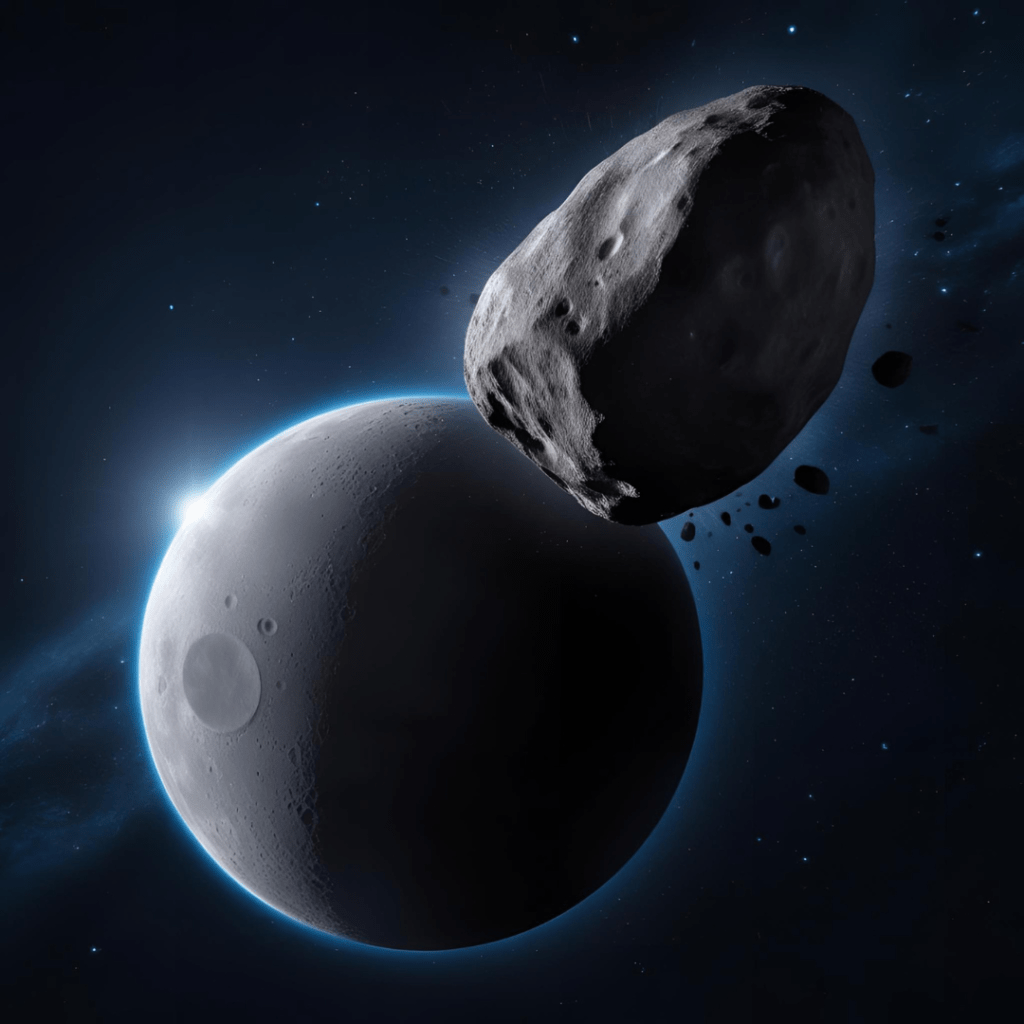
Asteroid 2024 YR4, once a potential Earth threat, now poses a slight risk to the Moon. NASA’s latest assessments indicate a 3.8% chance of impact on December 22, 2032. While Earth remains safe, scientists are closely monitoring its trajectory.
Asteroid 2024 YR4, first identified in December 2024, has been the subject of extensive observation and analysis due to its initial classification as a potential Earth impact threat. Over the past months, updated data have significantly altered our understanding of its trajectory, size, and potential impact scenarios.
Trajectory and Impact Assessments
Upon its discovery, early estimates suggested a 3.1% chance of asteroid 2024 YR4 impacting Earth on December 22, 2032. However, with continuous observations and refined calculations, this probability has been reduced to near zero, effectively ruling out Earth as a potential impact target. The European Space Agency (ESA) has reported that the chance of Earth impact is now down to 0.001%.
Conversely, updated analyses indicate a 3.8% chance of the asteroid colliding with the Moon on the same date. This probability has increased from earlier estimates, such as the 1.7% chance reported in February 2025. Despite this increase, there’s still a 96.2% chance that 2024 YR4 will miss the Moon entirely.
Size and Composition Insights
Utilizing the James Webb Space Telescope (JWST), astronomers have refined the asteroid’s size estimate. The latest observations suggest that 2024 YR4 measures approximately 60 meters (197 feet) in diameter, comparable to a 15-story building. This size categorizes it as a significant near-Earth object capable of causing substantial regional destruction if it were to impact Earth.
Potential Lunar Impact Consequences
Should 2024 YR4 collide with the Moon, the impact would not alter its orbit. The collision could create a crater between 500 and 1,000 meters in diameter, releasing energy about 340 times greater than the Hiroshima atomic bomb. While this would be a significant event, it would not pose a threat to Earth. Moreover, such an impact would provide a unique scientific opportunity to study crater formation and the Moon’s geological response without affecting our planet.
Scientific Significance and Ongoing Observations
A lunar impact would offer a rare chance to observe and analyze the effects of asteroid collisions with planetary bodies. Researchers anticipate that the event would be visible from Earth using telescopes, allowing for detailed studies of the impact’s characteristics. Astronomers are closely monitoring 2024 YR4’s trajectory, with plans for additional observations in May 2025 to refine impact probabilities further.
Disclaimer: Asteroid paths can change as new data becomes available. While current assessments suggest minimal risk, it’s important to stay informed through official sources.
